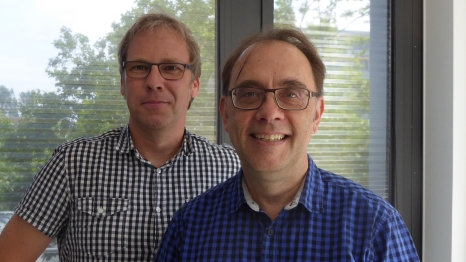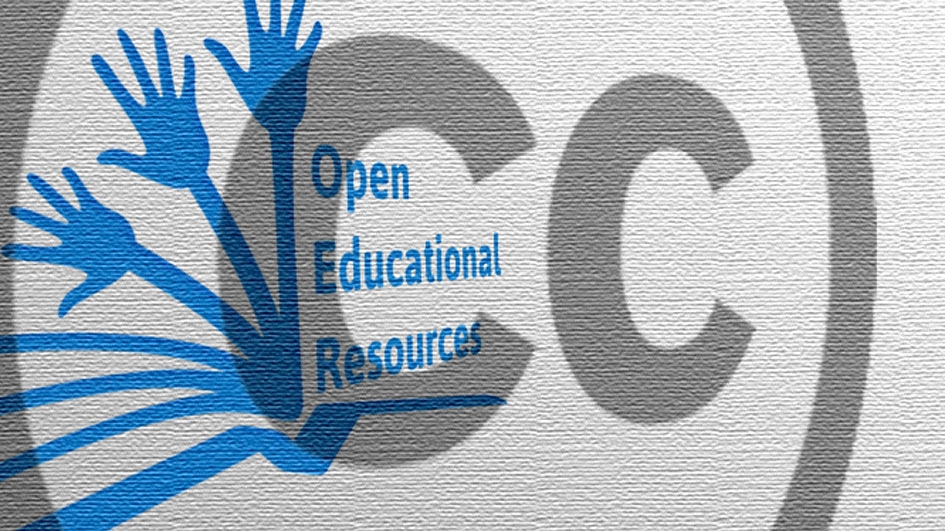
»Teachers often don't know what OER are. That makes it particularly important to educate people.«
The way to a OER platform
Siemens Stiftung promotes the idea of Open Educational Resources (OER). Drawing on a simple licensing and transparent legal policy, every user can now use, edit, combine and share the open educational media. The expansion of the media portal into an interactive platform for open educational content was accompanied by experts. Thereupon, the following interview from 2015 with two researchers from the Universität Duisburg-Essen: professor Michael Kerres, Chair of Educational Media and Knowledge Management, and Richard Heinen, who heads the university’s LearningLab, contains their views on the possibilities of OER and the impact these resources will have on the teaching and learning of tomorrow.
Professor Kerres, you've been working on OER in your department for many years. What brought you to this topic?
Kerres: In the LearningLab here at the University of Duisburg-Essen, we look at the extremely diverse forms of teaching and learning with digital media – from school to university, vocational training and lifelong learning. The ways in which learning materials are produced, provided and used are extremely important in this context.
That’s because digitalization has completely transformed the framework. In the past, teachers prepared the materials themselves and photocopied them for their students.
Doing this today in the digital world poses a whole series of legal questions: What materials can I use? Where and how can I make these new materials available to my students? Can I provide them to colleagues on closed or open-access platforms? Licensing learning materials as OER can answer many of these questions. We’re also interested in how the different platforms developing on the Internet interact with each other. Are we seeing the emergence of closed systems, which offer a good user experience but mean we risk becoming dependent on individual providers? Or is it possible to create an open ecosystem, in which resources can be shared among different platforms and reviewed and improved by any number of participants? The openness of educational content is of course also related to the question of educational equality and plurality.
Mr. Heinen, to what extent do OER play a role in learning innovations?
Teachers today work in such mixed groups increasingly often. OER now offer a legal framework in which specially adapted content can be passed on and used by colleagues, provided the teachers are willing to collaborate. Collaboration plays a role on another level, too. When they work with digital media, students can create new content together, documenting their learning outcomes for example. If they use and produce OER, this content is also visible and usable beyond the classroom walls.
Why are teachers still so hesitant to use OER?
Richard Heinen: Another thing is that OER often mean learning with digital media. That makes it important for the schools to have the necessary technology and organization. Do I, as a teacher, even have the option of using interactive content in the classroom? Does the school have mobile devices, and have the students learned how to use them? It’s clear that OER are one aspect of the complex changes necessary if schools are to meet the challenges of a digital society.

How can the quality of OER be ensured?
Good user feedback and reference systems can also reduce the risk of biased learning resources. If an OER provider really wants to use its materials to manipulate people, attentive teachers and editors can intervene by issuing warnings and using suitable platforms to make others aware.
What contribution do you think foundations can make to the spread of OER?
Foundations have a number of options for supporting development of OER. They can stimulate public discussion and provide information using events and publications. They can also set an example by publishing high-quality OER and developing portals to distribute these. The way the materials are designed can then also help to develop new learning scenarios. The aim should not just be to have OER, but to use them to align learning with the needs of today’s society and enable as many people as possible to access this learning.
In the next few months, you will be advising Siemens Stiftung as it transforms its Media Portal into an interactive OER platform. What are the main challenges for such a platform?
Michael Kerres: It’s also important to make it clearly visible to teachers that the materials are OER and to explain what that means. The Media Portal should ultimately also give teachers the opportunity to provide their own OER, especially if this content is created using the materials already in the portal.
August 2015


